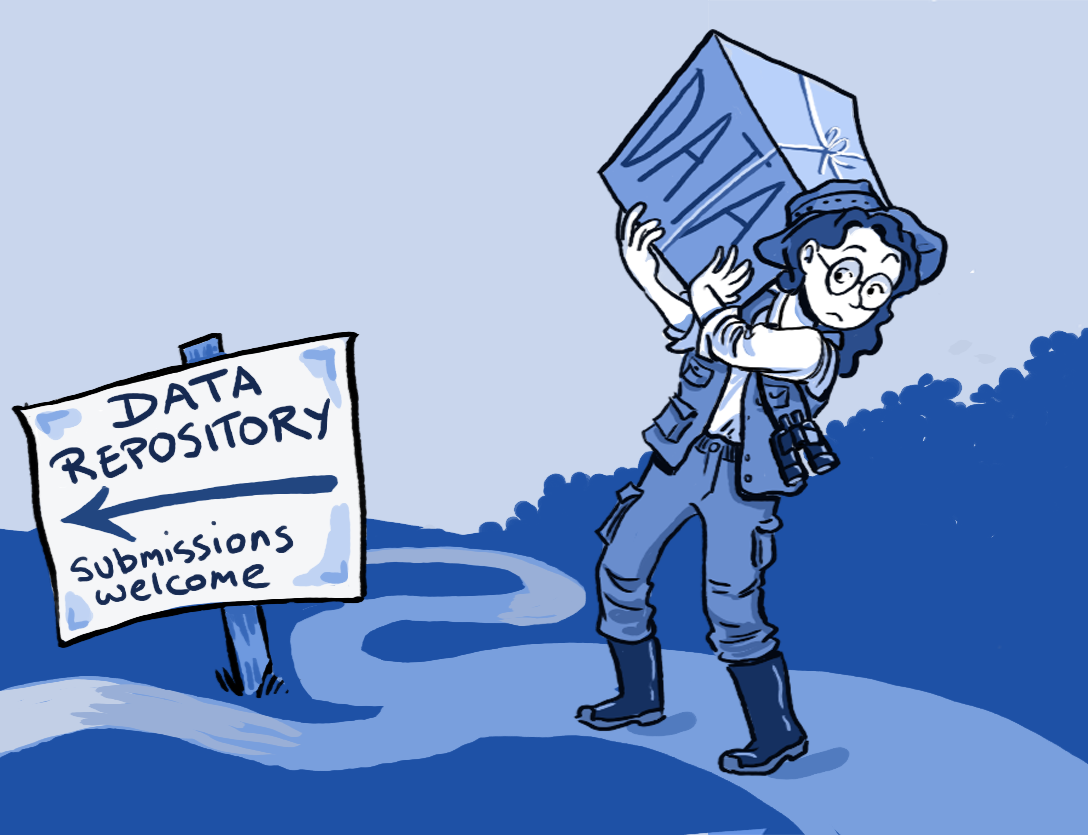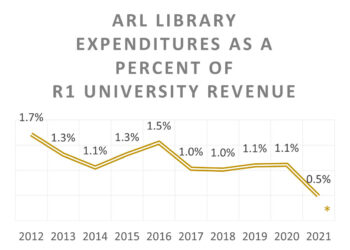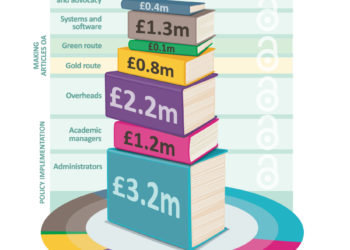 In my last post, I explored the evolution of the library as publisher movement. The growth of digital publishing and the desire to bring about reform in scholarly communication has led to a rapid expansion of library publishing programs. As I outlined, many of the initial library publishing programs were partly motivated by a desire to disrupt subscription publishing and a feeling that digital publishing ought to be cheaper and faster than traditional print. Many of the early librarian publishers quickly learned, as publishers have had to, that due to increased scale and diversification in publishing outputs, doing digital well is just as costly and arguably more complex than publishing in print.
In my last post, I explored the evolution of the library as publisher movement. The growth of digital publishing and the desire to bring about reform in scholarly communication has led to a rapid expansion of library publishing programs. As I outlined, many of the initial library publishing programs were partly motivated by a desire to disrupt subscription publishing and a feeling that digital publishing ought to be cheaper and faster than traditional print. Many of the early librarian publishers quickly learned, as publishers have had to, that due to increased scale and diversification in publishing outputs, doing digital well is just as costly and arguably more complex than publishing in print.
Undeterred, some librarian publishers have formed collaborative relationships and done extensive market research with university presses, learned societies, and their own academic patrons. As well as supporting the publishing of grey literature and student works, such as law reviews, emergent librarian publishers have partnered with small print-only journals, often with the help of endowment-funded subsidies, to help them get online and make them discoverable. Spurred on by these successes, librarian publishers have begun expanding the range of services that they offer (while still remaining lean and light-weight) to include things like marketing and peer review support. Most importantly for this post, 34% offer data publishing services.
The Relationship Between Library Publishers and Institutional Repositories
The high proportion of library publishers offering support for data sharing reflects librarians’ awareness of the funder-driven trend towards greater transparency, particularly in science. It is worth noting that many library publisher programs grew out of institutional repository efforts, which are traditionally focused on making data and self-archived author manuscripts publicly available. In 2011, Joan Giesecke of the University of Nebraska-Lincoln (UNL) wrote a case study that nicely illustrates the evolution from repository to publisher called Institutional Repositories: Keys to Success. Giesecke describes how at her institution, the library hired the former director of the UNL university press to manage the repository. By treating the repository as an outward-facing publishing operation, rather than a virtual filing cabinet, the new director was able to grow the usage of the repository along an exponential curve from almost nothing to 300,000 uses per month within 5 years.
The number of institutional repositories dwarfs the number of library publishing programs. The Directory of Open Access Repositories (OpenDoar) consists of more than two and a half thousand entries, and those are only the ones that have registered. This raises the specter of thousands more library publishers springing out of institutional repositories. Although most are not yet equipped to become publishers, and many may not want to, I wonder if library publishers could be more disruptive than we give them credit for.
In a recent post on the Digital Science blog, I argued that librarians have been quietly putting together the pieces of a successful system for data publication. Many of the repository platforms that libraries use, such as bepress (digital commons) and D-Space were developed and continue to be used as publishing platforms and subsequently boast features such as DOI creation, search engine optimization, and meta-data management for integration with discovery layers like Primo and Summon.
With publishing and repository solutions sharing much of the same infrastructure and history, it’s no surprise that many librarians see data and articles as just two types of scholarly output (albeit two very important types) among many that should be documented and shared. University of Michigan’s Deep Blue repository and Clemson’s tigerprints are good examples of platforms where different types of scholarly output can be found alongside each other. If we carry this train of thought to its logical conclusion, we can think of publishing platforms and data sharing as merely use cases of a new and much more flexible model to support scholarly communication where articles, data sets, videos of techniques and just about any other form of scholarly output can be given a DOI and made discoverable through meta-data and search engine optimization.
Why Libraries Might be Disruptive in Way that Others Haven’t
Many of you will now be thinking that you’ve heard this kind of wooly-minded blue sky futurism before. I don’t blame you, there’s much talk about innovation in scholarly communication that doesn’t take account of the fact that publishing is a business that must respond to market needs. It’s reasonable to look at ideas like this and ask how it would work from a practical perspective. What market need does it fill for researchers? What’s the business plan? Would academics even participate at all? I’m going to tackle those objections below, by exploring what has changed about the landscape recently, and how library publishers might gain from their relationship with the institutions in which they work.
The biggest single limiting factor for disruption in scholarly publishing is said to be the need for researchers to publish in prestigious journals, with that prestige being defined almost exclusively by their impact factor. It is said that the coin of the realm in academia is citations, and that is still true. The surest way to land a faculty position or get tenure is to publish a slew of publications in premium journals. A repository/publishing platform that attaches a DOI to every object and makes content discoverable through SEO, (with no real hope of obtaining an impact factor) cannot begin to compete with that.
The dominant use of citation metrics for hiring and promotion is not set in stone. The power to shape the behavior of academics ultimately lies with hiring and tenure evaluation committees and those who can influence those committees on a policy level. Funders are already making an impact in precisely this way. In the UK for example, we’re beginning to see changes in researcher behavior as a result of conditions of the Research Excellence Framework. If institutions wanted to incentivize the participation in library publishing and repository efforts by instructing tenure committees to favor such outputs, they certainly could do so.
How Should Publishers Respond?
I’m not suggesting that library publishers are poised to massively disrupt the industry overnight. After all, it is unlikely that institutions will disregard the impact of publishing in top tier journals in favor of supporting library publishing efforts. I would say, however, that convergent library publishing and repository efforts represent an increasingly important model for scholarly communication.
Some forward thinking publishers have also noticed the emerging need for researchers to be able to share their data. At last week’s STM Association Future Lab committee tech trends brainstorming session in London and STM Innovations seminar that followed the next day, panels and conversations frequently referenced the central themes of diversification in scholarly output and particularly the elevation of data to a ‘first class object’. With both librarians and publishers attempting to meet the same emerging need, we may be in for some interesting times ahead as researchers ultimately decide who they would prefer to trust with the publication of their data.
Traditional publishers should closely follow the progress that institutional repositories and library publishers are making in this area. From the early days of internally focused repositories that served as a preservation archive of limited scope, librarians have learned what is needed from their patrons (and their patrons’ funders), and what is possible from their university press colleagues. For reasons of history, technology and proximity to institutional decision makers, libraries may be well placed to support researchers’ data publication needs and meet funder mandates. As we’re beginning to see shifts in attitude towards what constitutes and what is demanded as ‘legitimate’ scholarly output, publishers need to think carefully about the role that they will play in supporting new forms of scholarly communication.
Discussion
4 Thoughts on "What’s Going On in the Library? Part 2: The Convergence of Data Repositories and Library Publishers"
At Penn State our launching of the Office of Digital Scholarly Publishing as a joint venture of the press and library in spring 2005 was partly motivated by the library’s having received a Mellon grant to work with Cornell on an extension of the DPubs software platform, which had been used at Cornell to publish journals in math and statistics. The idea was to turn this into a modular system that could be adapted for other kinds of publishing, including monographs. Indeed, we did use this platform for publishing a variety of materials, including back issues of four PA history journals, digitized public domain books about PA from the library’s special collection, a new monograph series in Romance studies, and conference proceedings of a society for women in engineering. One hope I had the the ODSP was to have monographs published in “enhanced” form, including data sets associated with social science research. That never happened, but it was originally part of the plan. Where I think library publishing has the chance to be mnost disruptive is not in the field of journal publishing but rather textbook publishing. A model program at SUNY-Geneseo shows what the potential is. It makes eminently good sense for libraries to work with local faculty in producing textbooks geared specifically for the needs of the home university. No commercial publisher can afford to customize textbooks in that fashion, so library publishers have a definite competitive advantage in this space.
Reblogged this on Elizabeth carron | The Empirical Librarian.



